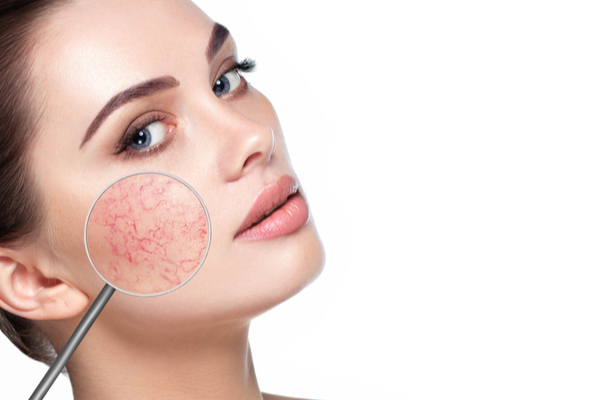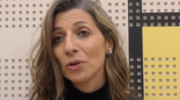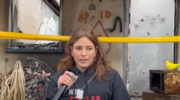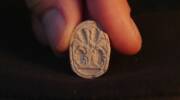Revolutionary 3D-printed Second Skin could provide an easier, cheaper alternative for scars, topical wounds and eventually skin grafts too.
By Abigail Klein Leichman, Israel21c
Imagine if you could pop a cartridge in your inkjet printer and custom print skin to conceal a scar or blemish instead of covering it with makeup or getting cosmetic surgery.
Imagine if surgeons could print skin for burn victims that would put an end to painful skin grafts.
This technology is under development in Rehovot, Israel, in the Hebrew University lab of serial entrepreneur and inventor Prof. Oded Shoseyov.
As described in his lab’s paper in Polymers, Second Skin is a nano-thin film that mimics natural healthy skin tones, traits, 3D structure and features such as freckles, beauty marks or tattoos.
The initial over-the-counter “digital makeup” product for home use would be like a temporary tattoo that wears off in 10 to 14 days as the skin naturally sloughs off its outer layers.
“You take a picture of yourself. Then you open Photoshop in your computer and draw your preferred makeup. Once you are completely happy with the result, you push the button,” Shoseyov explains.
The file would be transmitted to your existing printer in which the regular ink cartridge is replaced with a cartridge of keratin-melanin ink — the components of the top layer of skin – and the paper is replaced with nanofilm.
Keratin is a protein, while melanin is a family of pigments that dictate skin color. Keratin and melanin also have protective properties – after all, Shoseyov reminds us, skin is the largest organ in the body and protects us from sun, infection and, most importantly, dehydration.
Shoseyov’s revolutionary ink containing these substances suddenly makes it possible to print skin.
“The motivation was that we in Israel have many young people who have scars after experiencing trauma in wars. And I thought that we can do something better for them,” he said.
“It’s not a huge number of people. Therefore, we think that the cosmetic industry may be also interested and that will increase the chance for such a technology to be mass marketed.”
Skin Grafts
When a large area of skin is destroyed by trauma or burn, possible treatments include grafting skin from the patient, from a skin bank or from lab-cultured tissue.
However, grafting is a long, painful, expensive process. Furthermore, “the look and functionality of the skin is not the same as pre-trauma,” says Ilya Pittel, VP Business Development at Hebrew University’s Yissum tech-transfer arm.
“What Second Skin does so cleverly is replicate the three-dimensional structure of the skin in which the outer layers are embedded in the dermis,” Pittel tells ISRAEL21c.
Shoseyov explains that before a skin graft, surgeons “debride the dead cells from the burned or damaged tissue, cover it with a dressing and wait seven to 10 days until new tissue grows underneath. Then they take off the dressing – typically a very painful process — and then do the skin graft. And unfortunately, the end result is not ideal.”
Second Skin could provide a graft that exactly matches the size and shape of the wound and the shade of the patient’s skin. It could be printed in the operating room while the wound is being debrided, Shoseyov says.
While it’s printing, the surgeon would extract a few fat cells from the patient and take from them regenerative mesenchymal stem cells. These stem cells will be placed on the Second Skin “scaffold” and then the wound will be covered.
Shoseyov expects that perfectly normal skin will replace the Second Skin as it is naturally exfoliated within two weeks.
Embedding Electronics in Second Skin
But grafting is a much longer-term goal for Shoseyov and lab members Chen Nowogrodski and Ido Simon. For now, they are perfecting the process of home-printing skin.
In addition, they’re working with Hebrew University nanotech expert Prof. Shlomo Magdassi on embedding electronics in Second Skin.
Shoseyov points out that health monitoring is one obvious use case for e-skin.
Another possibility is replacing the hand stamp that you get at amusement parks and nightclubs with a small second-skin patch that has an RFID (radio frequency identification) tag to track your presence and charge your purchases.
Recreational VR is another potential use case. With electronics embedded in an e-skin face patch, for example, you could “feel” cold wind whooshing past while you’re virtual skiing.
Company #18?
Yissum’s Pittel points out that “Second Skin can be 3D printed, which means that manufacturing it is versatile and can be carried out in a wide array of places — prefabricated in a pharmaceutical facility, onsite in a hospital, or at home for topical cosmetic applications. We are looking at commercializing this technology via a startup or by being licensed to a cosmetics or skin grafting company.”
If it becomes a startup, Second Skin would be Shoseyov’s 18th company.
Among other startups Shoseyov helped found are Melodea (sustainable package coatings from cellulose nano-crystals), Paulee CleanTec (eco-friendly solutions for managing animal and human waste), GemmaCert (instant cannabis and hemp potency analysis), BioBetter (a tobacco-based platform to mass produce growth factors for cultivated meat) and SavorEat (robotic technology to dispense custom-printed fast food from plant-based sources).
Do You Love Israel? Make a Donation - Show Your Support!
Donate to vital charities that help protect Israeli citizens and inspire millions around the world to support Israel too!
Now more than ever, Israel needs your help to fight and win the war -- including on the battlefield of public opinion.
Antisemitism, anti-Israel bias and boycotts are out of control. Israel's enemies are inciting terror and violence against innocent Israelis and Jews around the world. Help us fight back!























